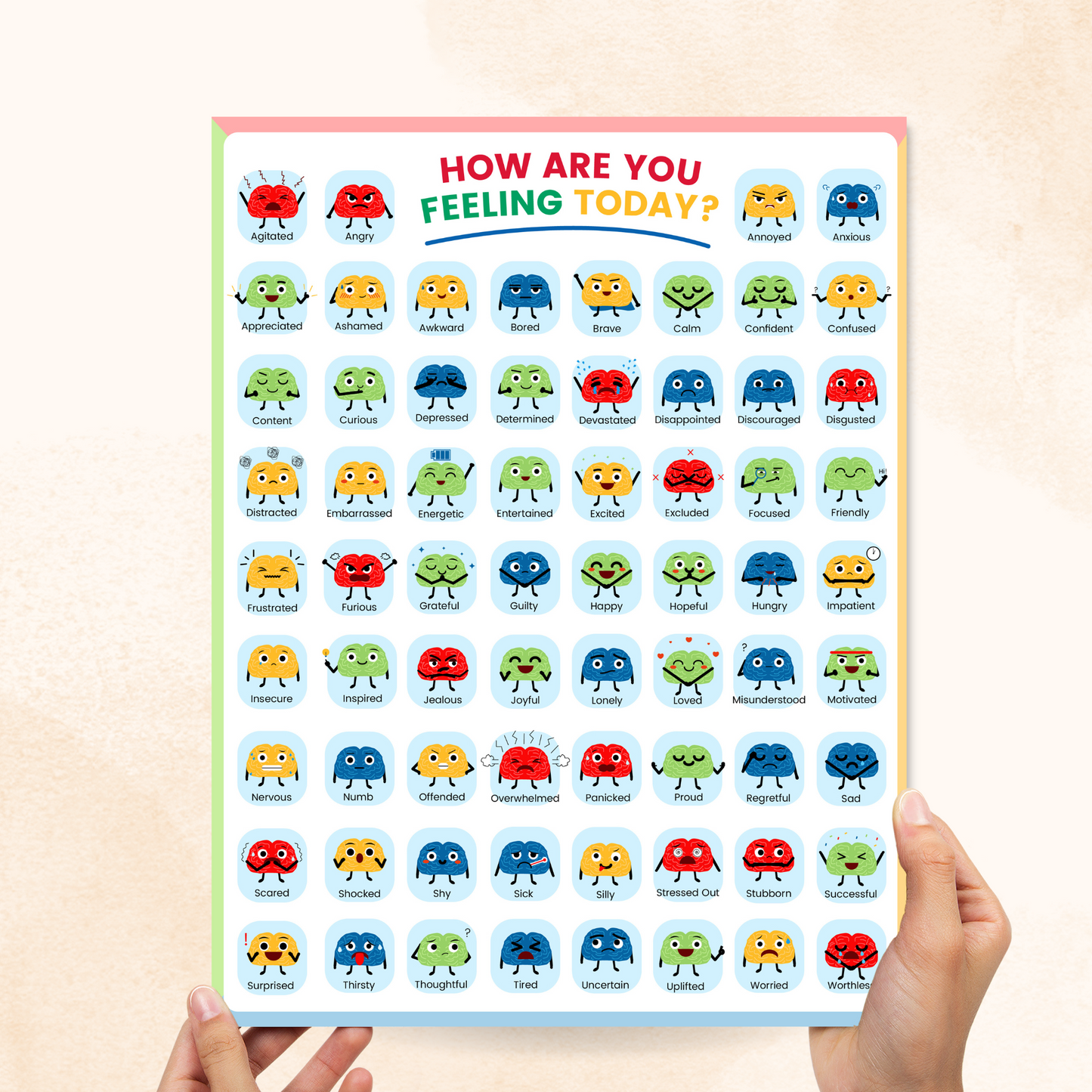Emoji Feelings Chart (Extra Large)



Emoji emotions are simple pictures that show relevant feelings, like happy, sad, or angry faces. Although they are often used on social media, these emojis are now being included in educational or therapy charts to help kids understand and talk about their feelings more easily.
The Emoji Feelings Chart (Extra Large) serves as a visual resource for young clients to recognize and express their emotions, especially when they don’t have the right words for them. The chart shows 68 different feelings, and it comes in various sizes. It includes basic emotions as well as more complex ones like uplifted, jealous, and agitated.
Using this chart, kids and teens can get used to talking about their emotions openly. They can regularly identify their feelings with the emojis and practice sharing how they feel with a parent or teacher to become more comfortable with expressing their emotions.
To keep the chart visible, caring adults can hang it in places like kitchens, classrooms, or playrooms. They can also start a daily routine that involves discussing the emoji feelings with their child and suggesting coping strategies with visual tools such as the Coping Skills Alphabet poster.
*This item is an instant digital download. A link to download your files will be emailed to you once payment is confirmed.
Want more resources like this? Check out our full catalog of feelings worksheets and handouts.
References:
- Cherbonnier, A., & Michinov, N. (2022). The recognition of emotions conveyed by emoticons and emojis: A systematic literature review. Technology, Mind, and Behavior, 3(2). https://doi.org/10.1037/tmb0000067
- Garcia S. E., Tully E. C. (2020). Children’s recognition of happy, sad, and angry facial expressions across emotive intensities. Journal of Experimental Child Psychology, 197 Article 104881. https://doi.org/10.1016/j.jecp.2020.104881
- Golan O., Gordon I., Fichman K., Keinan G. (2018). Specific patterns of emotion recognition from faces in children with ASD: Results of a cross-modal matching paradigm. Journal of Autism and Developmental Disorders, 48(3), 844–852. https://doi.org/10.1007/s10803-017-3389-5
- Heck A., Chroust A., White H., Jubran R., Bhatt R. S. (2017). Development of body emotion perception in infancy: From discrimination to recognition. Infant Behavior and Development, 50, 42–51. https://doi.org/10.1016/j.infbeh.2017.10.007
- Ren, H., Huang, L., Du, F., Huang, W., Lin, G., Kret, M. E., & Chen, S. (2023). Preschoolers can match the facial and bodily emotional expressions: A behavior and eye-tracking study. SAGE Open, 13(4). https://doi.org/10.1177/21582440231214347
- Vicari, S., Reilly, J. S., Pasqualetti, P., Vizzotto, A., & Caltagirone, C. (2000). Recognition of facial expressions of emotions in school‐age children: The intersection of perceptual and semantic categories. Acta Paediatrica, 89(7), 836-845. https://doi.org/10.1111/j.1651-2227.2000.tb00392.x
- Instant digital download
- File: PDF
- Size: 8.5" x 11"
I wanted a chart of as many emotions as possible, and this one has 68! The quality and drawings are perfect, and my son is having fun 'picking out emotions' when I ask him to name what he's feeling. This is exactly what I was looking for, and the download was available quickly and was able to be printed on a few different sizes.




